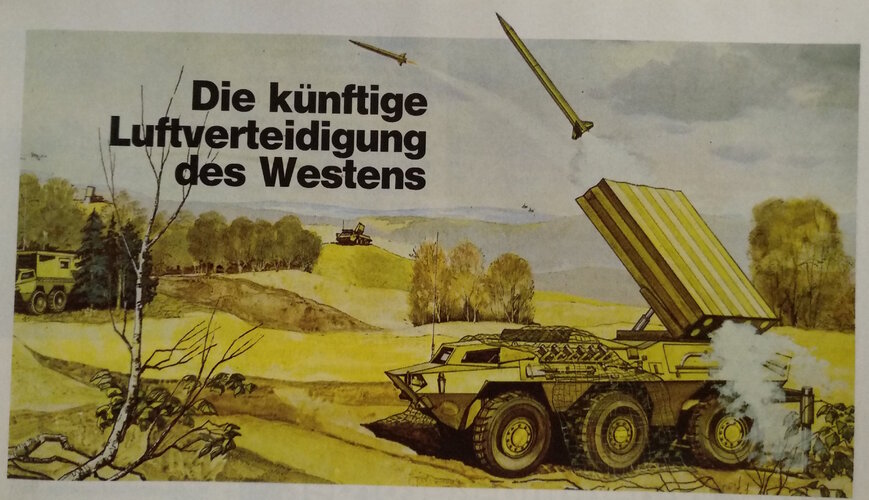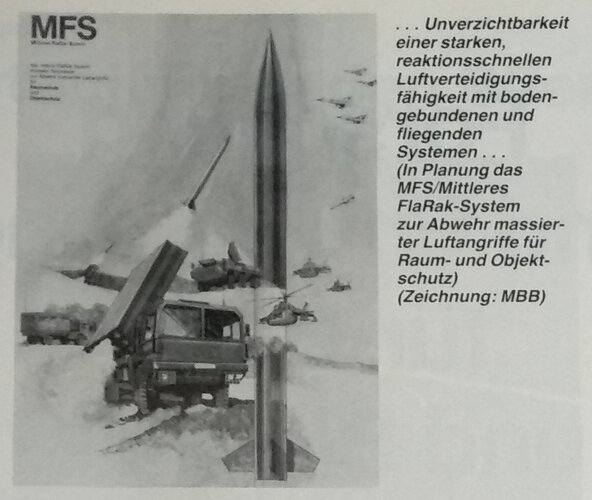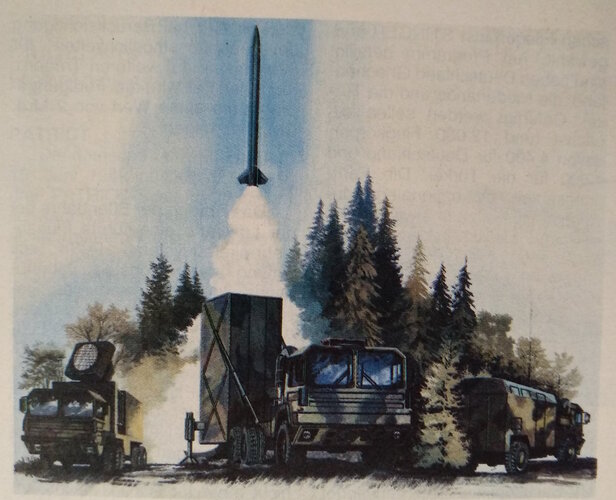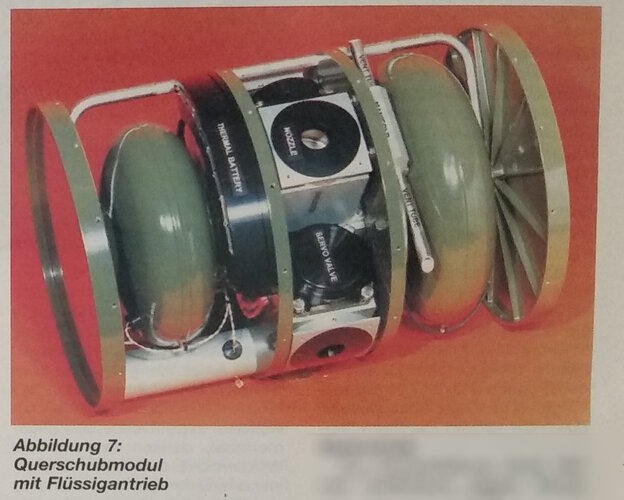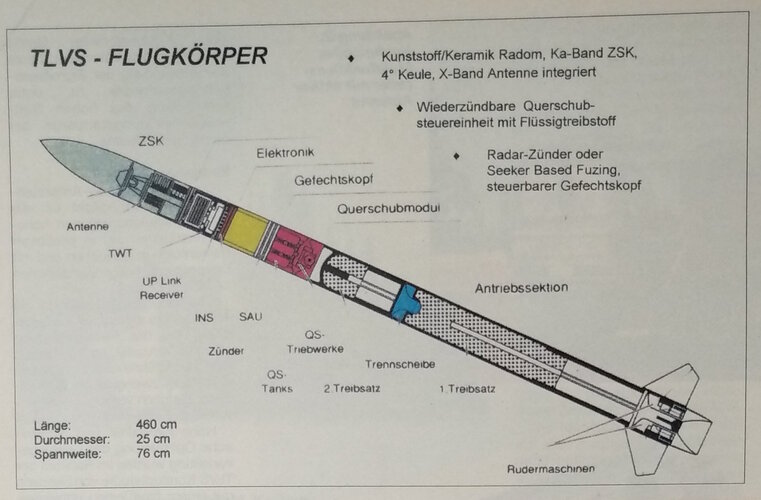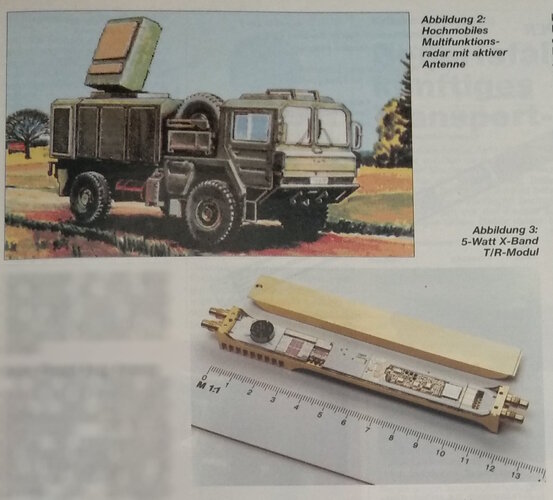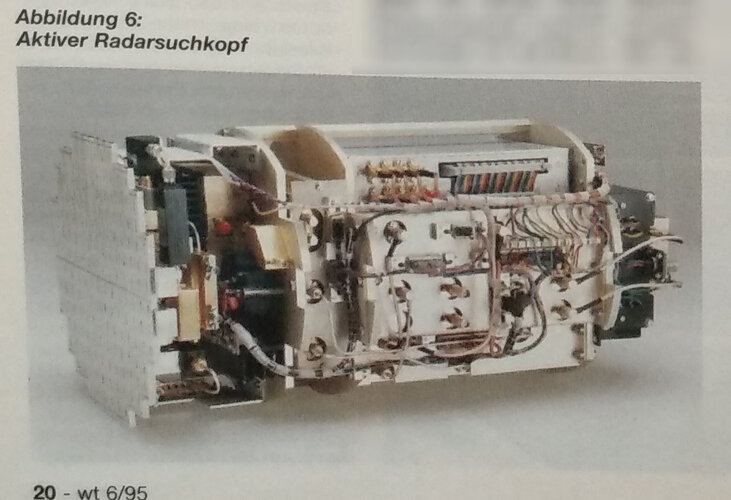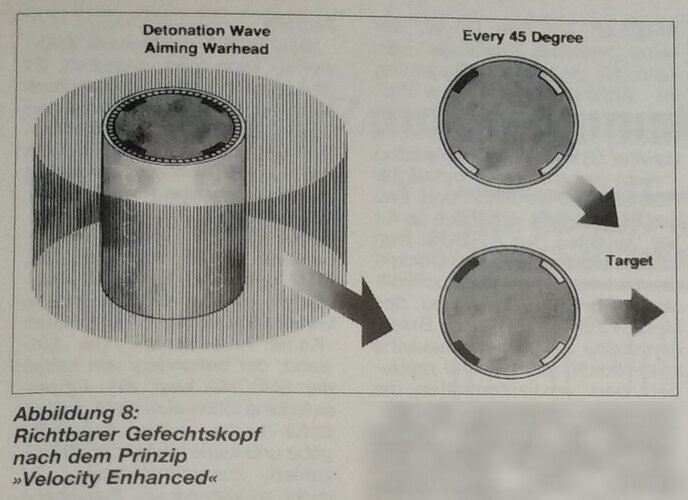- Joined
- 9 October 2009
- Messages
- 19,875
- Reaction score
- 10,378
The primary contractors on this late 1980s program were MBB, AEG and Siemens. Unfortunately it fell prey to the post-Cold War peace dividend, being cancelled in favour of what originally had been a stopgap program as far as Germany was concerned, the US led Advanced Tactical PATRIOT, later to evolve into MEADS. Some background to, and a few scant details of, the program are in the excerpt below.
http://www.dtic.mil/docs/citations/ADA347583Tactical Air Defense System
The Hawk air defense missile system, introduced by the
Air Force in the sixties and meanwhile repeatedly more
or less greatly improved, is to be replaced by a modern
air defense missile system at the beginning of the next
millennium—the modern system's German project designation
is tactical air defense system (TLVS) but occasionally
the former designation MFS (medium air
defense missile system) is used. Since the Hawk replacement
as part of the integrated NATO air defense is no
purely German problem, consideration has been given
for some time in several European countries and in the
United States to a future air defense missile system
under the general designation of medium surface-to-air
missile (M-SAM), occasionally even in connection with
SDI, but something which for the Europeans, especially
for the Germans, does not appear to be acceptable for
political reasons.
In the IEPG (Independent European Program Group) a
European staff target (EST) for a future medium SAM
system was adopted in early 1987; now a one-year
concept definition study is to start in the spring of 1988
in which it is to be examined, among other things,
whether such a system can or should be ATM/ATBMcapable,
in other words whether it can also defend
against missiles or ballistic missiles. Based on a memorandum
of understanding now in the process of being
countersigned, in addition to Germany also Belgium,
France, Great Britain, the Netherlands, Norway, Italy,
and Spain will participate in the IEPG study. For cost
reasons alone, undoubtedly not all of these countries will
participate in an M-SAM development.
The German share in this study—in which each country
pays its own industry—is also part of a national 30-
month concept phase after the staff target for an TLVS
had been approved some time ago. The concept of this
medium range TLVS is a mobile all-weather capable
system with an all-around defense capability. It is supposed
to be capable, even under difficult ECM and
environmental influences to effectively counter the most
varied threats from the air—also all kinds of unmanned
offensive missiles up to a self-defense capability against
tactical ballistic missiles. Against the background of a
growing manpower shortage and a tight budget situation,
a small manpower requirement for operation and maintenance
and moderate lifetime costs are demanded.
Work to date of a German working group of the firms of
AEG, MBB (spokesman function), and Siemens, which
was already done for MFS, led to a concept with a
multifunction radar with electronic scanning for homing
and fire control and a high performance missile with
active homing head.
How a TLVS or M-SAM is achieved also depends on the
desirable cooperation with the United States; there no
uniform opinion has formed concerning the implementation,
not even on the part of industry. For example, of
Raytheon—the Hawk developer and supplier—it is
known that the firm for obvious reasons prefers an even
more far-reaching improvement of Hawk, while other
firms think of a new development. In line with U.S.
efforts to have the Europeans participate more in the
burdens for a common defense, the opinion is even
heard that M-SAM is to be developed by the Europeans
in overall charge, but with U.S. participation.
The attitude of France, Great Britain, Italy, and Spain is
also important. These four nations want to develop
first—based on the French ASTER air defense missile
now being developed—a sea-launched air defense system
with a range of about 15 km (designation: FAMS—
family of anti-air missile systems), from which a groundbased
system with a range of about 30 km could be
derived later on. Germany, on the other hand, primarily
wants a ground-based system and attaches importance to
ATM/ATBM self-protection capability in a second stage
of development, something which the other nations, on
their part, consider as less urgent. But to possibly arrive
at a kind of modular system, Germany now has observer
status in connection with the FAAMS work. But to
complicate the whole thing even more: For the NATO
frigate 90 the German Navy requires a modern air
defense system, but here prefers not FAMS but more the
NAAWS (NATO anti-air warfare system) now in the
process of conception under the leadership of the United
States.
Whatever may happen: There is a demand for a modern
TLVS in Germany; development funds have been allocated
in the 1989 Bundeswehr plan—but the whole thing
must not become too expensive. As for procurement, it is
to follow the Jaeger 90 (EFA). If that is not achieved,
then another upgrading of the Hawk combat effectiveness
is probably inevitable—but money the Air Force
would prefer to allocate to the TLVS.

